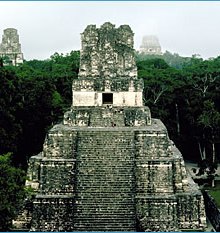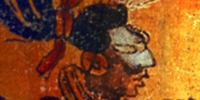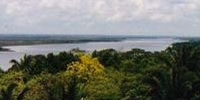explore
Mesoamerica - Jungle Lowlands

Tikal was one of the largest and most powerful centres in the ancient Maya world. Its grand temples, testaments to its rulers, still tower well over the 30m high jungle canopy.
Today, the region known as Mesoamerica encompasses the countries of El Salvador, Honduras, Nicaragua, Guatemala, Belize and Mexico. Mesoamerica is a region of shared traditions, rich in the ancient roots of several distinct cultures. These societies left behind monumental evidence of their incredible history that has fascinated millions of surviving heirs as well as scores of scholars, environmentalists and travelers alike.
This section focuses primarily on the ancient Maya people who lived in Mesoamerica's jungle lowlands. The theme of this section is landscapes, which are the surroundings, both natural and built, that humans live within. Choose a link below to explore the jungle lowland landscapes.
Seen above is Temple II in the foreground with Temples V and IV looming in the background. The ruins of Tikal, in Guatemala's Petén region, are the remains of a once sprawling municipality which covered almost 100km² and rose to spectacular heights of prominence during the Classic Maya Period (A.D. 250-950).
The city's absolute collapse and eventual abandonment by the end of the Classic period was so significant and the trend so widespread that for many decades archaeologists believed that the entire Maya civilization must have collapsed at this time. While it is true that a wide-spread transformation in larger Maya society and politics did occur around A.D. 900, and many cities like Tikal were abandoned, recent work in nearby Maya regions which flourished in the Postclassic are painting a more complex picture of this transition period in ancient Maya society, where some polities continued to build while others crumbled.

